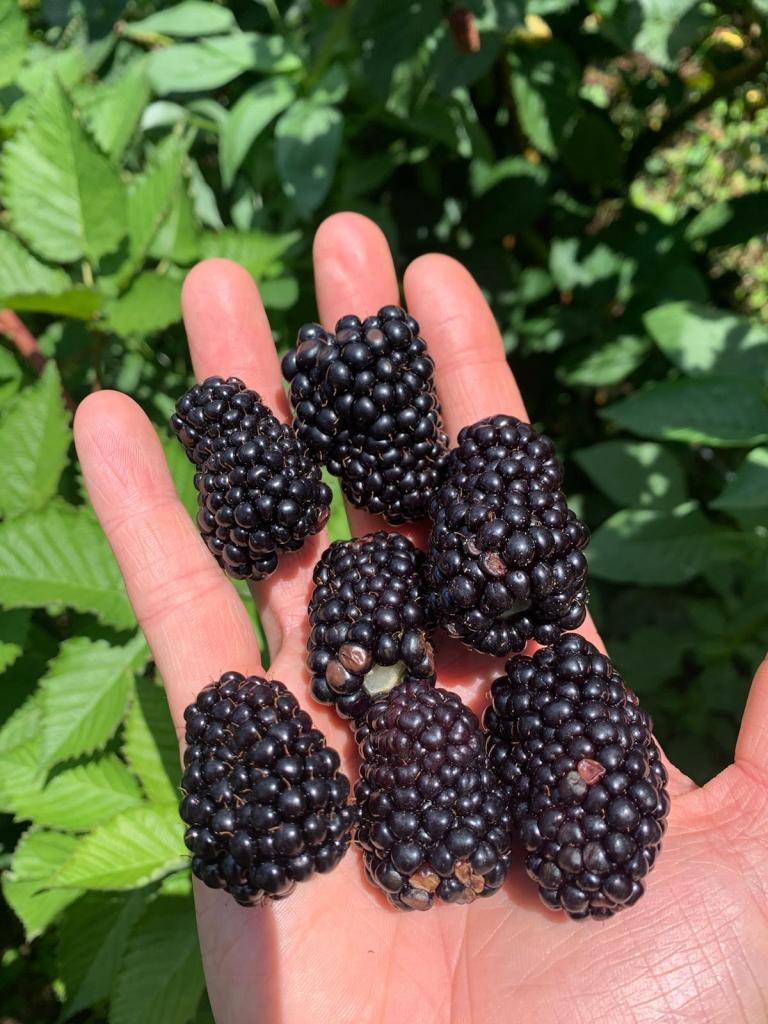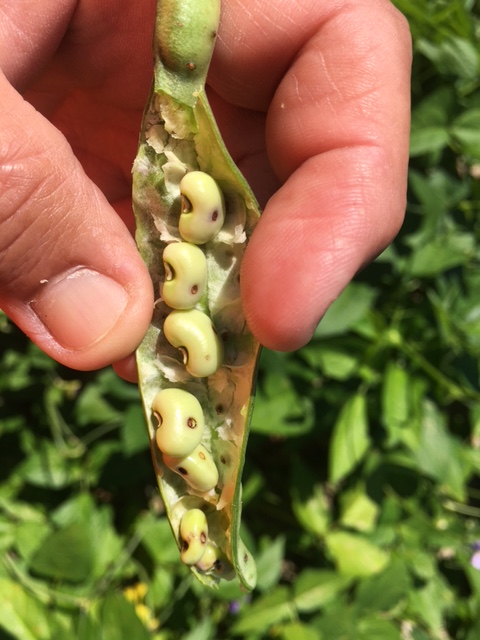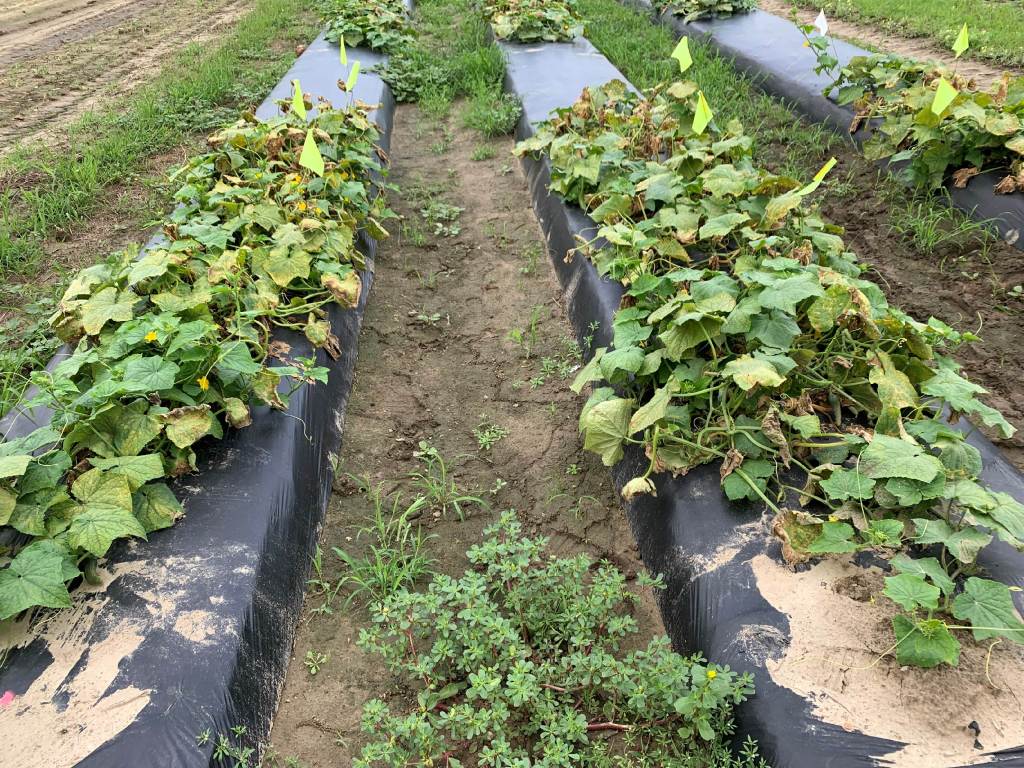Clemson Extension agents provide updates in the The South Carolina Grower this week about the status of various crops being produced throughout the state.
Weekly Field Update
Coastal
Rob Last reports, “Peaches and blackberries are coming to harvest with good quality and volumes. As yet we are not seeing any issues with spotted-winged drosophila. Vigilance will be required as this pest can be troublesome in blackberries. Watermelons and cantaloupes are coming off well. However, we are seeing cucurbit downy mildew in watermelons. Spray programs will need to be robust to the end of harvest to manage the disease. The disease is characterized by brown or yellow spots on the leaves with a grey-purple sporulation on the underside of the leaves. Anthracnose is also starting to show up as angular lesions on the stems, leaves and fruit in some fields. Tomatoes and peppers are looking good with some anthracnose fruit rot being seen. There are active spider mites, too, in some crops. Vigilance and scouting is the order of the day to keep on top of disease and pest issues.”
Zack Snipes reports, “Everything from arugula to zucchini is coming in right now in the Lowcountry. This next week is usually one of the busiest weeks for us as July 4 approaches. Cucurbit crops are starting to look rough after multiple pickings, disease pressures and lots of rain. The tomato crop and watermelon crops are coming off nicely. I am seeing a good bit of blossom end rot and sunscald in pepper. Blossom end rot is a calcium deficiency that is usually seen when we have uneven soil moisture levels. When it is hot and there is a heavy crop load, you may need to water more than you think. In our sandy soils, more frequent, shorter irrigation cycles (45 minutes or so) is better than letting irrigation systems run all night. Sunscald is common when there is poor canopy coverage in the pepper allowing the sun to directly shine on the pepper. This is usually a result of a root rot or poor fertilization which inhibits a good leaf canopy to develop.”


Pee Dee
Tony Melton reports, “Picking peppers and tomatoes hard. Using a lot of sun protection products on crops. Thrips are really bad on peaches, losing about one-third of No. 1s. Weeds are bad because of all the rain we had when we should have been plowing – especially in pickles and sweet potatoes. Butterbeans and peas are in fair abundance.”
Bruce McLean reports, “Vegetable crops have been growing well, as of late. Sweet corn, peas, tomatoes, peppers, cucumbers, squash, snap beans and zucchini are all being harvested in good volumes. There have been a couple of tomato fields where southern blight was seen pretty widespread across the field. Cucurbit downy mildew (CDM) is widespread across the Pee Dee, as well as Cowpea Curculio. Growers that are spraying more targeted (management) fungicides for CDM (like Orondis Opti, Gavel, and Ranman) are controlling the disease much better than those applying preventative sprays like Bravo and Mancozeb. Seems like everyone is having trouble controlling the Cowpea Curculio, though. Watermelon, cantaloupe and okra should be ready for harvest in about a week. Blueberries are still going pretty strong with good volumes and quality. Blackberries are winding down. Muscadines are coming along, but the crop looks like it may be a bit short this year.”


Upstate
Kerrie Roach reports, “Strawberries are finished, and blueberries are king in the upstate. Weather in the region has been varied, and irrigation is key to smaller market producers right now. Spotty showers across the area have left hit-and-miss spots that may need supplementation. Summer pruning is on the horizon for apple producers… more information to come at a meeting in July.”
Statewide
Dr. Keinath reports, “Cucumber growers should consider adding Presidio back into their fungicide rotations to manage downy mildew. Isolates of downy mildew in Charleston were sensitive to Presidio in 2018, 2019, 2020, and again in 2021. In spring and fall 2020, susceptible slicing cucumber cultivar, Speedway, sprayed with a weekly rotation of Presidio and Bravo, had the lowest diseased leaf area and yielded 2.6 times more than non-sprayed cucumbers. Profits were about $3,600 per acre with Presidio/Bravo compared to $1,000 per acre with no fungicide calculated after all production costs were accounted for. The same efficacy was seen again in spring 2021. It is risky to rely only on two fungicides, Ranman and Orondis Opti, to manage cucumber downy mildew. Adding another fungicide to the rotation will reduce the likelihood that cucurbit downy mildew will become resistant to Ranman or to Orondis.”











